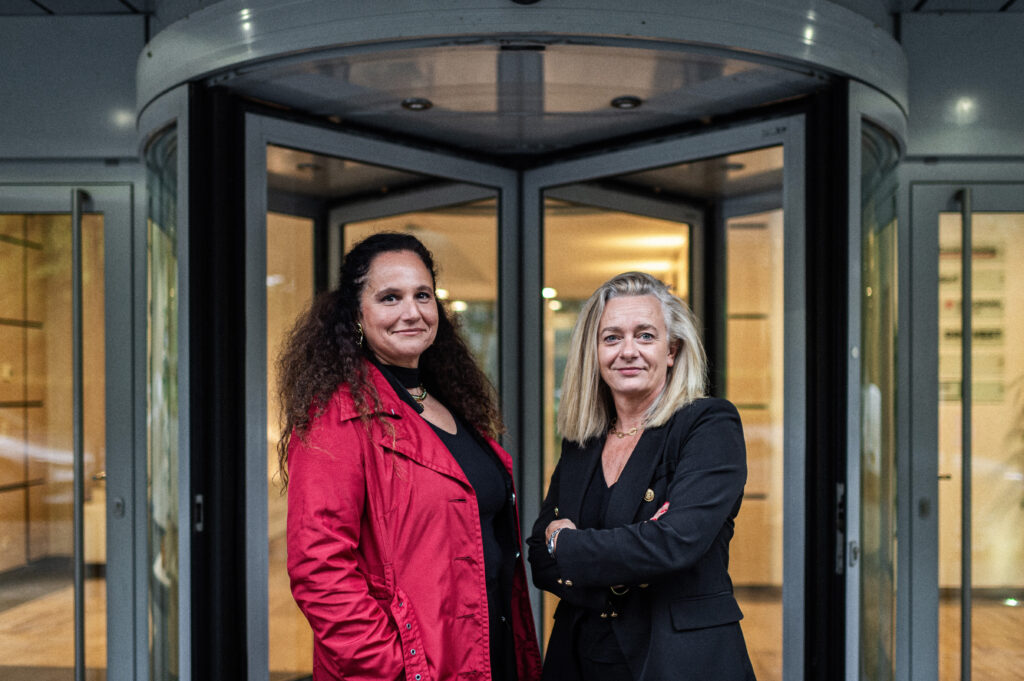Natural disasters, cybercrime, geopolitical instability… All over the world, companies are facing new challenges with consequences that are difficult to predict. Major material damage, temporary paralysis of production facilities and the disruption of supply chains are just a few examples of these emerging risks. The probability of such events occurring is far from zero, but insurance companies are still uncertain on the conditions to be met if cover is to be provided for these still poorly defined risks, and even on their ability to meet the demands of all their customers.

Thierry Flamand, Chairman of the Management Committee of the Commissariat Luxembourgeois aux Assurances (CAA), and Valérie Scheepers, member of the Management Committee and Head of Reinsurance
Some risks, such as cyber threats, have become virtually uninsurable, forcing companies to find alternative ways of protecting themselves. But, reinsurance captives could provide the solution. Thanks to a regulatory framework put in place in the mid-1980s (law of 24 February 1984), Luxembourg is Europe’s leading centre for captive reinsurance. It is home to 200 such entities, the offshoots of major international companies that have realised the benefits of taking responsibility themselves for some of the risks they face.
“Today, multinationals are no longer the only ones interested in the advantages of setting up a captive. We now deal with filings from smaller companies”, observe Thierry Flamand, Chairman of the Management Committee of the Commissariat Luxembourgeois aux Assurances (CAA), and Valérie Scheepers, member of the Management Committee and Head of Reinsurance.

The captive benefits from a tax deferral in Luxembourg. This is not a tax advantage but the tax is paid when the ceiling is reached, or the captive liquidated"
These entities are reinsurance companies in their own right, but created by non-financial entities, or financial groups from outside the insurance sector. Their specific purpose is to provide reinsurance cover for their parent company, or various entities in the group to which they belong. A company that sets up a reinsurance captive continues to take out contracts with an insurance company – known as ‘fronting’. But by taking on some or all of the reinsurance cover for the contract, it pays the premium into its reinsurance captive rather than to an external insurer. This amount will be used to reimburse any claims incurred by the group, and has the advantage of being retained and managed internally.

Multinationals are no longer the only ones interested in the advantages of setting up a captive. We now deal with filings from smaller companies.
Reserves for future risks
This is where the Luxembourg captive model comes into its own with major international companies. When the regulatory framework was put in place, the legislator stipulated that the captive’s annual surplus (the difference between the premiums collected and the amounts paid out in compensation for claims) should be placed in reserve, in the equalization reserve (PFS or provision pour fluctuation de sinistralité). This equalisation reserve is limited to a ceiling which is based on the underlying reinsured risks. ‘Over the years, the captive has built up reserves and adequately protected its parent company in the event of a major claim. Furthermore, since the captive is required by law to allocate its technical and (a portion) of its financial result to the equalization reserve, it benefits from a tax deferral in Luxembourg. This is not a tax advantage – it is taxed at the same level as any commercial entity – but the tax is paid when the ceiling is reached, or the captive liquidated’, explain Marc Voncken and Matthieu Despréaux, respectively Partner and Director Insurance at PwC Luxembourg. By the end of 2023, assets injected via the PFS into Luxembourg captives totalled €12 billion.

Marc Voncken and Matthieu Despréaux, respectively Partner and Director Insurance at PwC Luxembourg
Well-managed reinsurance captives offer other advantages. In particular, they enable policy holders to benefit from tailor-made contracts, where premiums are precisely adapted to the level of risk exposure. Faced with new, uncontrolled risks, customers are increasingly finding that standardised premiums are overvalued. ‘Companies are currently facing tougher underwriting conditions. Prices are going up, as are deductibles, while the limits of insurability are shrinking’, say CAA’s directors. They also point out that insurers do not see captives as competitors. ‘These in-house programmes are a relief for them, because they are unable to handle the quantity of risk demanded by the market. At some point, they turn down business. So this kind of alternative is very welcome.’
Captives also offer international companies a way of optimising costs by concentrating risk management in one place, rather than contracting insurance locally in the various countries where they do business. ‘Placing money in a regulated internal structure also makes it possible, in some cases, to avoid pressure from shareholders, who prefer to distribute profits rather than build up substantial reserves’, point out Voncken and Despréaux. Finally, companies that have developed one or more captive reinsurance structures generally take steps to strengthen prevention operations, thereby reducing accident risks and their insurance budget.

Cettina Alibrandi and Sophie Vandeven, respectively Business Development Client Relationship Manager and managing director of AON Insurance Managers Luxembourg
Profession: captive manager
The activities of a captive require skills similar to those found in a traditional insurance company, and are therefore relatively far removed from the core activities of most businesses. So, specialist companies have sprung up to help manage these risks, and the main players are based in Luxembourg. These companies must be approved by the CAA, which supervises them, awards them the title of Insurance Professional and appoints one or more licensed managers. AON Insurance Managers, for example, has been present since the development of the sector four decades ago. ‘Our role is to offer a full range of services to ensure the day-to-day running of the captive: accounting, governance, treasury, legal and tax aspects, contract monitoring and support the development of the managed captives,’ explain Sophie Vandeven and Cettina Alibrandi, respectively managing director of AON Insurance Managers Luxembourg and Business Development Client Relationship Manager.

Our role is to offer a full range of services to ensure the day-to-day running of the captive.
Their mission may also extend to investing the sums set aside within the PFS. Generally speaking, the investment strategy is defined by the group, or the captive’s Board of Directors. But it’s a delicate game that has to comply with solvency rules and cash requirements. ‘A well-funded captive obviously cannot leave large sums of money sitting in a non interest bearing cash account. We have to explain to the client the consequences of an investment and ensure good asset/liability management in line with the risks underwritten, to ensure that there is enough cash to pay claims’, continue the managers at Aon Luxembourg. It should be noted that in Luxembourg, to ensure this level of liquidity, in consideration of group strategy, the CAA also authorises intra-group loans up to a limited % percentage of PFS and own funds.
Born in the United States nearly half a century ago, where there are more than 2,000 of them, the idea of captive companies within the insurance sector was quickly adopted by Luxembourg, but has been slow to take hold in Europe more widely, despite a European directive dating from 2005. However, the concept is increasingly being taken on board by the corporate world. Previously seen as a tool for efficiently managing insurance portfolios at lower cost, captives are increasingly helping to ensure that companies can continue to benefit from the best possible cover against new threats to their business.

